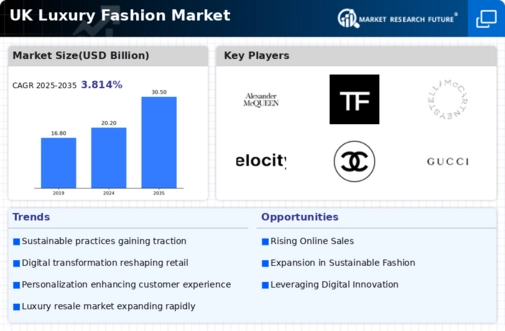Influence of Social Media
The influence of social media on the luxury fashion market cannot be overstated. Platforms such as Instagram and TikTok have become vital marketing tools for luxury brands, enabling them to reach a broader audience and engage with consumers in real-time. Influencers and celebrities play a crucial role in shaping consumer perceptions and driving trends within the luxury fashion market. In the UK, social media campaigns have proven effective in boosting brand visibility and sales, with some brands reporting increases of up to 20% in engagement following targeted social media initiatives. This trend suggests that brands must invest in their social media strategies to remain relevant and competitive in the luxury fashion market.
Sustainability Initiatives
Sustainability initiatives are increasingly becoming a focal point within the luxury fashion market. Consumers are now more conscious of the environmental impact of their purchases, prompting brands to adopt sustainable practices. This includes sourcing materials responsibly, reducing waste, and implementing ethical production processes. In the UK, a survey indicated that over 60% of luxury consumers consider sustainability when making purchasing decisions. As a result, brands that prioritize sustainability are likely to enhance their reputation and appeal to a growing segment of eco-conscious consumers. The luxury fashion market is thus witnessing a transformation, where sustainability is not merely an option but a necessity for long-term success.
Evolving Consumer Preferences
The luxury fashion market is currently experiencing a shift in consumer preferences, particularly among younger demographics. This demographic increasingly values authenticity and individuality, which leads to a demand for unique and bespoke products. As a result, brands are adapting their offerings to cater to these preferences, which may involve limited edition releases or collaborations with emerging designers. In the UK, this trend is reflected in the growing popularity of niche luxury brands that have seen a rise in market share. According to recent data, the luxury fashion market in the UK is projected to grow by approximately 5% annually, driven by these evolving consumer preferences. Brands that successfully align their strategies with these changing tastes are likely to thrive in this competitive landscape.
Technological Advancements in Retail
Technological advancements are reshaping the luxury fashion market, particularly in the realm of retail. The integration of augmented reality (AR) and virtual reality (VR) technologies is enhancing the shopping experience, allowing consumers to engage with products in innovative ways. For instance, luxury brands are increasingly adopting AR applications that enable customers to visualize how clothing will look on them before making a purchase. This trend is particularly relevant in the UK, where a significant portion of luxury fashion sales is now conducted online. Data indicates that online sales in the luxury fashion market have surged, accounting for over 30% of total sales. As technology continues to evolve, brands that leverage these advancements are likely to gain a competitive edge in the luxury fashion market.
Economic Factors and Consumer Spending
Economic factors play a pivotal role in shaping the luxury fashion market. In the UK, fluctuations in disposable income and consumer confidence directly influence spending patterns on luxury goods. Recent data suggests that as the economy stabilizes, consumer spending on luxury fashion is expected to increase, with projections indicating a growth rate of around 4% in the coming year. Additionally, The rise of affluent consumers, particularly in urban areas, contributes to this growth. Brands that effectively navigate these economic conditions and tailor their offerings to meet the demands of affluent consumers are likely to prosper in the luxury fashion market.

























Leave a Comment